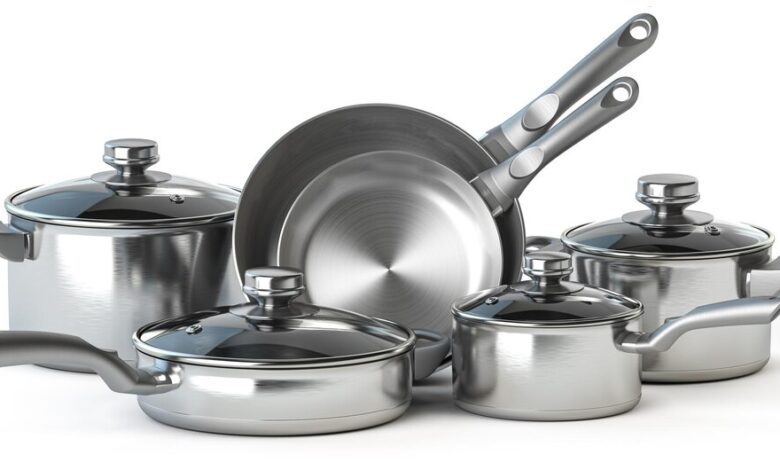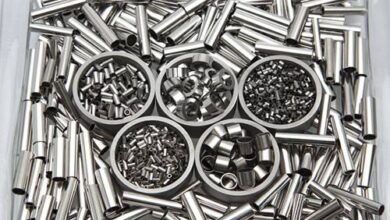Cooking Essentials: Finding the Right Cookware Set for Your Kitchen

Introduction to Cookware Sets
Cooking is not just a necessity; it’s an art form. Whether you’re a novice in the kitchen or an experienced chef, having the right tools can make all the difference.
One of the most fundamental aspects of any kitchen arsenal is the cookware set. From sautéing vegetables to simmering sauces, the cookware you choose can significantly impact the outcome of your culinary creations.
In this comprehensive guide, we’ll delve into the nuances of cookware sets, exploring the myriad options available and providing expert insights to help you make an informed decision.
Understanding Your Cooking Needs
Before delving into the vast array of cookware options, it’s essential to take stock of your cooking habits, preferences, and lifestyle.
Are you an adventurous home cook who loves experimenting with elaborate recipes, or do you prefer quick and simple meals? Do you often entertain guests and cook for large gatherings, or do you primarily prepare meals for yourself or your family?
Understanding your cooking style and the specific demands of your kitchen will serve as the foundation for selecting the perfect cookware set.
Consider the types of dishes you enjoy preparing most frequently. Are you a fan of hearty stews and braises, delicate sauces, or crispy stir-fries? Different cooking techniques require specific types of cookware, so it’s essential to choose a set that aligns with your culinary preferences.
Additionally, assess the size of your household and the quantity of food you typically prepare. A larger household may necessitate a more extensive cookware set with multiple pots and pans, while a smaller household may benefit from a more streamlined collection of essentials.
Materials Matter: Exploring Cookware Options
The materials used in cookware play a crucial role in its performance, durability, and even safety. Here’s an overview of some common materials used in cookware sets:
1. Stainless Steel
Stainless steel cookware is renowned for its durability, non-reactivity, and versatility. It’s resistant to rust, corrosion, and staining, making it suitable for a wide range of cooking tasks.
Look for stainless steel cookware with aluminum or copper cores, which provide superior heat conductivity and distribution.
Stainless steel cookware is dishwasher-safe and relatively low-maintenance, making it a popular choice for both professional chefs and home cooks alike.
2. Non-Stick
Non-stick cookware features a special coating that prevents food from sticking to the surface of the pan, facilitating easy release and cleanup.
Traditional non-stick coatings were typically made from polytetrafluoroethylene (PTFE), commonly known as Teflon. However, concerns have been raised about the safety of PTFE coatings at high temperatures, as they can release harmful fumes.
Alternatively, ceramic non-stick coatings offer a safer and more environmentally friendly option. Non-stick cookware is ideal for cooking delicate foods such as eggs, fish, and pancakes, but it’s essential to use non-abrasive utensils and avoid high heat to prolong the lifespan of the coating.
3. Cast Iron
Cast iron cookware is beloved for its exceptional heat retention, even heat distribution, and durability. It’s virtually indestructible and can last for generations with proper care.
Cast iron requires seasoning—a process of coating the surface with oil and baking it to create a natural non-stick patina. Once seasoned, cast iron develops a slick surface that improves with each use, making it ideal for searing, frying, baking, and even outdoor cooking.
However, cast iron is prone to rusting if not properly cared for, so it’s essential to dry and oil the cookware after each use and avoid soaking it in water.
4. Copper
Copper cookware offers unparalleled heat conductivity and responsiveness, allowing for precise temperature control and uniform cooking results.
It’s prized by professional chefs for its ability to heat up and cool down rapidly, making it ideal for delicate tasks such as melting chocolate or simmering sauces.
However, copper cookware can be prohibitively expensive and requires regular maintenance to prevent tarnishing. Many copper cookware sets feature a stainless steel or tin lining to enhance durability and facilitate easier maintenance.
5. Aluminum
Aluminum cookware is lightweight, affordable, and excellent for conducting heat quickly and evenly. It’s particularly well-suited for tasks that require rapid temperature changes, such as sautéing and searing.
Pure aluminum cookware can react with acidic foods, causing discoloration and imparting a metallic taste. To mitigate this issue, many aluminum cookware sets are coated with a non-reactive material such as stainless steel or anodized aluminum.
Anodized aluminum cookware is more durable and resistant to scratches and corrosion, making it a popular choice for everyday cooking.
Features to Consider
In addition to the materials used, several features should be taken into account when selecting a cookware set:
1. Compatibility
Ensure that your chosen cookware is compatible with your cooking appliances, including stovetops, ovens, and induction cooktops.
Some cookware materials, such as copper and aluminum, may not be suitable for induction cooking unless they have a magnetic base.
Look for cookware sets labeled as “induction-compatible” if you have an induction cooktop, or opt for magnetic induction disks that can be placed beneath non-compatible cookware to enable induction cooking.
2. Oven-Safe
If you frequently transition between stovetop and oven cooking, it’s essential to choose oven-safe cookware that can withstand high temperatures without warping or sustaining damage.
Check the manufacturer’s recommendations for maximum oven-safe temperatures and ensure that the handles are heat-resistant to prevent burns or accidents.
3. Handles and Lid Design
Comfortable, ergonomic handles are essential for safe and comfortable cooking. Look for cookware sets with handles that are riveted or welded securely to the pan for added stability and durability.
Additionally, consider the design and functionality of lids, ensuring a snug fit to lock in moisture and flavors during cooking.
Glass lids are particularly useful for monitoring the cooking progress without lifting the lid and releasing heat.
4. Maintenance and Care
Choose cookware sets that are easy to clean and maintain to prolong their lifespan and performance.
Dishwasher-safe options can streamline cleanup, but some materials may require handwashing to preserve their finish and prevent damage.
Follow the manufacturer’s care instructions for each type of cookware, and avoid using harsh abrasives or metal utensils that could scratch or damage the surface.
Conclusion
Selecting the right cookware set for your kitchen is a decision that should not be taken lightly.
By understanding your cooking needs, exploring the diverse array of materials and features available, and considering your budget and preferences, you can find the perfect cookware set to suit your culinary aspirations.
Invest in high-quality cookware that will stand the test of time, empowering you to unleash your creativity in the kitchen and create memorable meals for yourself, your family, and your friends.
With the right cookware at your disposal, the possibilities are endless. Happy cooking!



